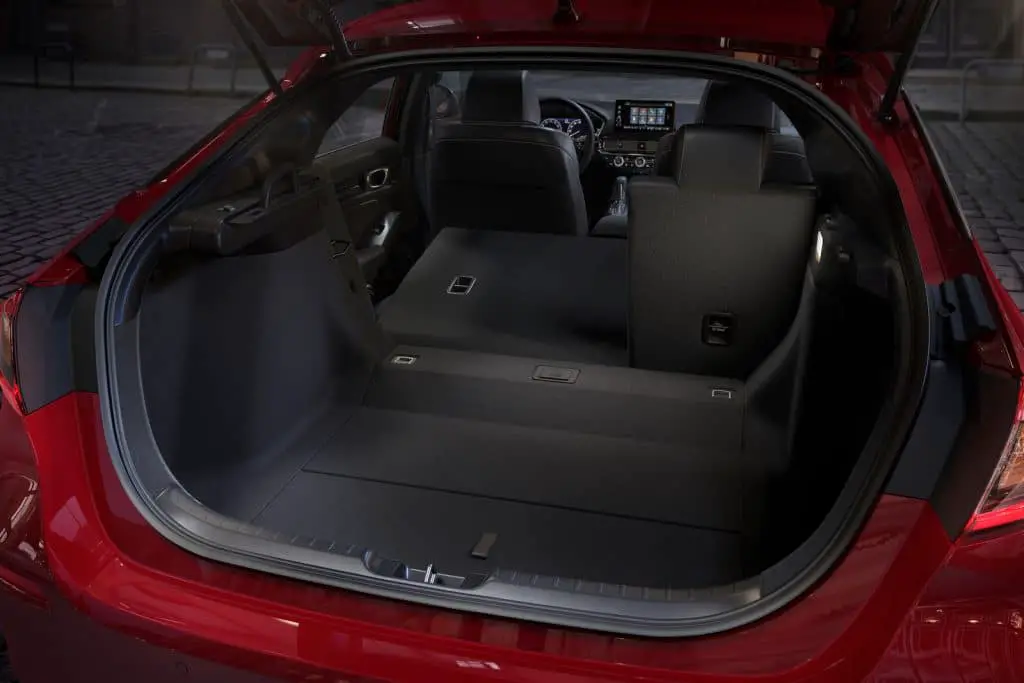For most people in America, when they think of buying a vehicle that sends power to all four wheels, the first thing that comes to mind is “SUV,” or, if not that, “truck.” However, that package typically comes at the expense of fuel economy (weight), poorer safety (due to the U.S. government’s more lax safety standards for SUVs, higher weight, and a higher center of gravity), and a higher initial purchase price.
This sacrifice is pointless though, as there are suitable hatchbacks with AWD (all wheel drive) that have similar cargo capacity, higher fuel economy, and lower weight, making them the objectively superior choice. Of cars in this class, these are the ones I would recommend.
Table of Contents
New and fuel efficient: 2019-present Toyota Prius
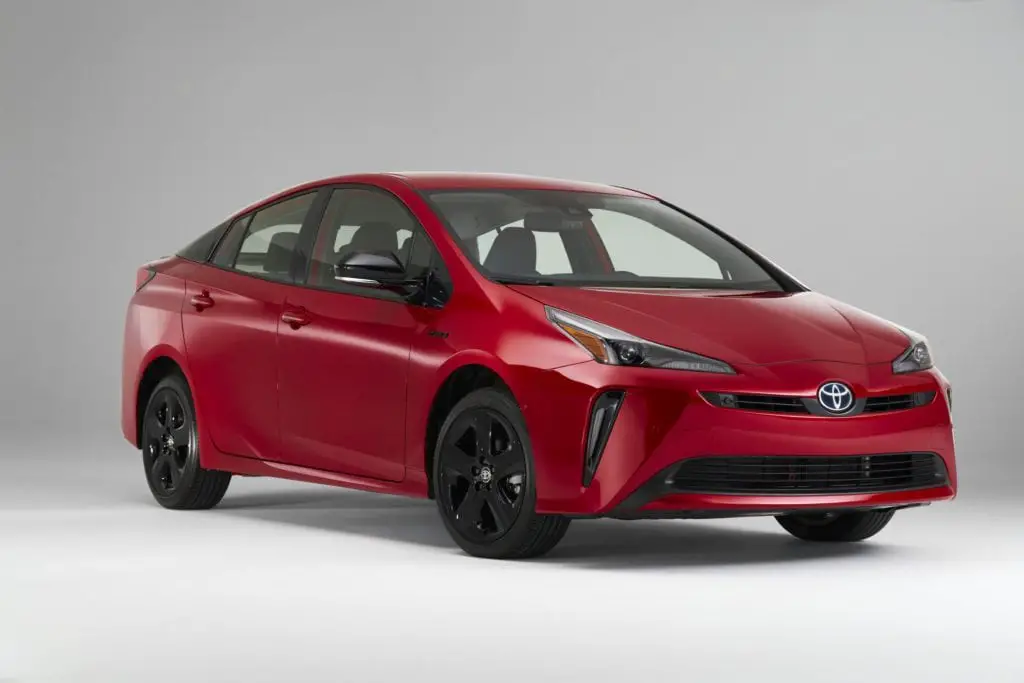
Technically more a liftback than a hatchback, the Toyota Prius, the baseline for all hybrid vehicles, deserves a spot on this list because, starting with the 2019 model year, the Prius has been available with all-wheel drive.
Given the inclusion of all-wheel drive on other models in the Toyota range, like the new Sienna minivan and Camry large sedan, this is a welcome addition to the Prius range, making it much more usable in areas where roads may stay snow covered and messy for longer than ideal. While it does come with a slight fuel economy penalty like most all-wheel drive versions of vehicles do (about 3-4 mpg), the AWD version still gets 49 mpg overall, so it is still better than most of what is on sale in America today and easy on the wallet. Aside from the excellent fuel economy, the newest Prius offers a compelling, livable package to use every day. Driving around town is dead easy, with excellent visibility all around, a quiet cabin, and comfortable seats make highway driving a breeze. In addition, the rear cargo capacity is excellent, with 24.6 ft³ behind the rear seats, and 50.7 ft³ with the rear seats down.
However, all is not perfect with the Prius. The suspension is very much at home on smooth, well maintained Japanese roads, but on American roads where regular maintenance of roads is a suggestion? Not so much, as bumps are more unsettling on the cabin than desired. The Prius also isn’t the fastest car in the world (but that isn’t the point), instrumentation is not directly in the driver’s line of sight, and the infotainment system is dated: less iPad, and more grocery store self checkout. Nonetheless, it is straightforward enough for what it is once you get past that.
While typically I would advise going onto the used market to get a better deal, here, I actually recommend buying new. Why? Well, the Prius holds its resale value well, and given the absurdly high used car prices in America at the time of writing, prices on used models are similar to slightly lower-spec new models. In addition, the great MPG of these cars means they are common as rideshare cars, and the used market is full of extremely high mileage cars (100k+ miles on a 3-4 year old car) that aren’t even significantly cheaper than base. Plus, the newest models (2021+) have Apple CarPlay and Android Auto as standard, and using Toyota’s in-house functionality prior to that was awkward, slow, and not user-friendly.
If you are buying a new car, the Prius with all-wheel drive is a compelling, practical, and fuel efficient option for someone needing all wheel drive and good practicality, but not SUV size or ostentatiousness.
New and fun: 2019-present Mazda3 Hatchback
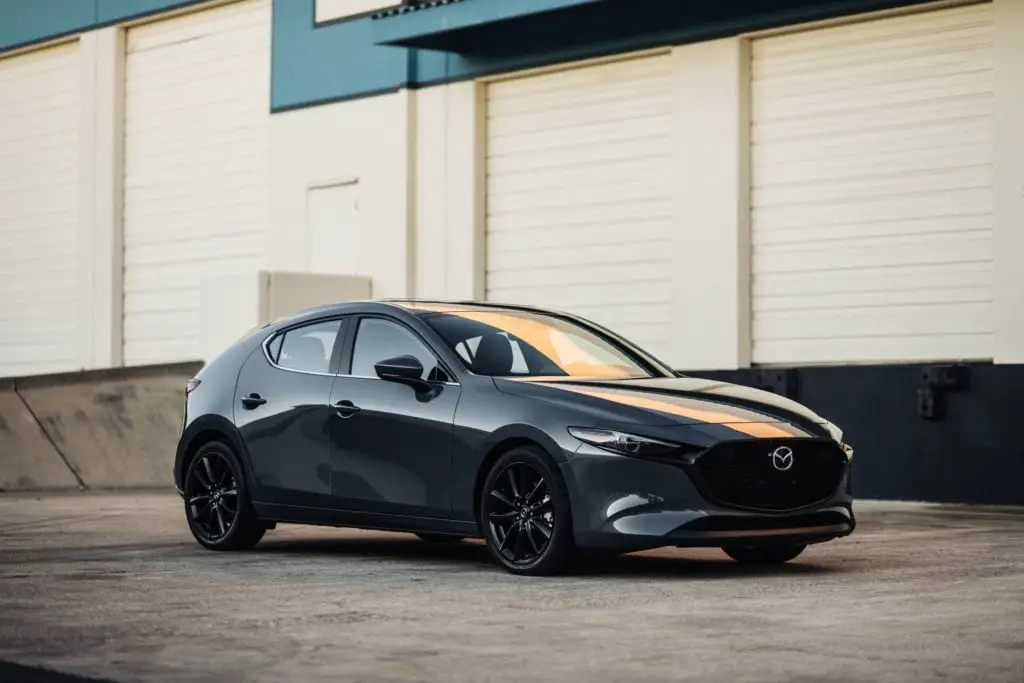
I talked more extensively about the Mazda 3 in sedan form in a previous article, the best AWD sedan to buy in 2021 (USA), but there are also many good points about the Mazda3 hatchback with AWD. Like the rest of Mazda’s lineup, the Mazda 3 hatchback is a byproduct of Mazda seeking to move themselves upmarket. What that means is an excellent, near luxury interior with few hard plastics and soft touch materials all around, all at a compact-car price point. Like the sedan, the Mazda 3 hatchback’s strong points are the communicative steering, great reliability, and excellent handling. Cargo capacity is larger as well, 50% more than the sedan, though small for its segment. Android Auto and Apple CarPlay are also standard inclusions, and fuel economy overall is 28 MPG. However, reviewers have often found that these numbers are conservative, and 30+ MPG with the AWD models is very achievable.
Nonetheless, the strongest thing in favor of the Mazda 3 is the fun factor. Driving the Mazda 3, you can tell these are the same people that make the Miata, as on a back road, the Mazda 3 feels light and tossable. This is aided by the seats, which are both comfortable and supportive, a difficult feat to achieve as supportive seats often sacrifice comfort. Braking is also a strong point, as is the ride quality, which communicates sportiness without punishing the interior occupants.
However, all is not perfect with the Mazda 3. It is not “American sized” for one, as the rear seats are quite cramped for the class in both hatchback and sedan form and are better suited for children. Secondly, the Mazda 3’s design, while attractive, is solidly “form over function,” as visibility is quite poor for a hatchback. Compared to its closest competitor, the Honda Civic Hatchback, the rear cargo volume is 20% less. Bizarrely, Mazda also opted to remove touchscreens from its infotainment, so use of the center dial is a must, making the experience more complicated than it needs to be.
Pricing for the AWD hatchback starts at $28,165 USD, and while cheaper options may be on offer in the used market, with prices the way they are at the time of writing, it is not worth it for the mileage and wear differences. Irrespectively, the Mazda3 hatchback with all-wheel drive is a great, fun-to-drive commuter great fuel efficiency for its class, without any less ability to take on the roads when the weather gets rough.
The inexpensive used option: 2007-2013 Suzuki SX4 hatchback
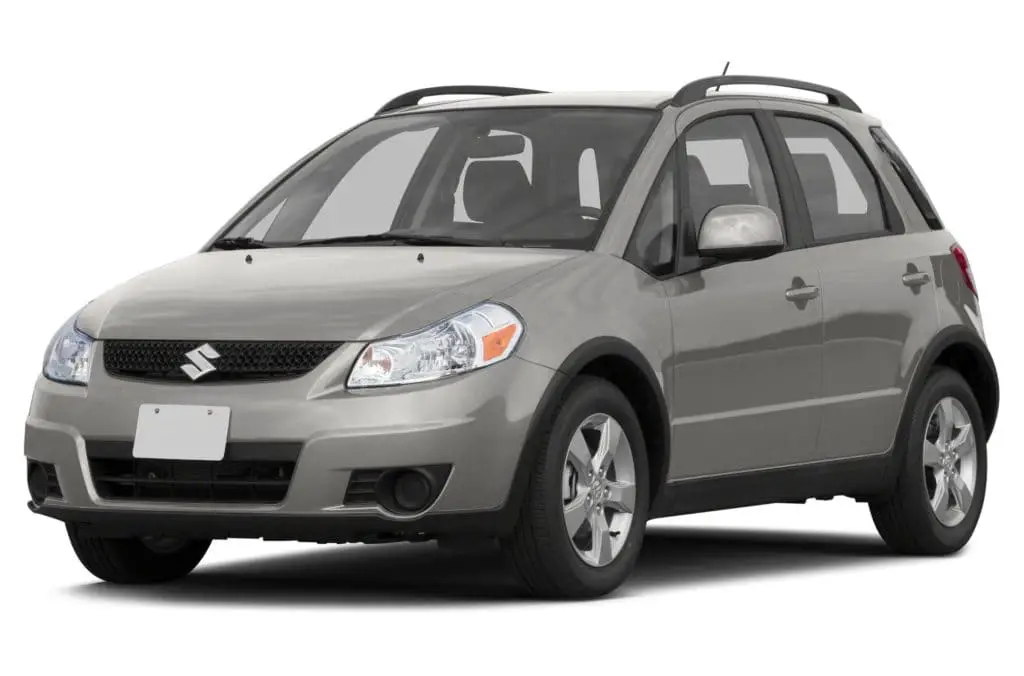
Subaru has been the gold standard for people in cold-weather places looking for an all wheel drive vehicle that can do it all, and this includes hatchbacks. However, in recent years, the brand has been plagued with quality issues, which means I cannot recommend most newer Subarus. However, there is a great hatchback with AWD from a now defunct brand that is an overlooked alternative to the Subaru Impreza, the 2007-2013 Suzuki SX4. While the brand has long been established as a good option for in the motorcycle market in America, Suzuki automobiles never enjoyed the same popularity, and that’s a shame, because the SX4 was a fitting swan song of the brand before they pulled out of the U.S. market entirely.
That is a real shame, because the SX4, while imperfect, is a compelling option in the space! While my initial thought, like most people, was that a Subaru Impreza was the only option, for some reason, I remembered this little car. And the SX4 has a lot to offer! Though it is essentially a lifted hatchback, the driving position is more reminiscent of crossovers, which some people will like, and some won’t. Head room is very abundant owing to the high roofline, and that also translates into lots of cargo space, 16 ft³ of it with all seats in use, and 54 ft³ with the rear seats folded down, which is better than most of its competitors at the time, and better than some larger cars today! Rear leg room is also a plus, and when combined with the abundant head room, the SX4 can easily seat four adults comfortably. Ride quality is also firm, but not overly so, making it clear this car was more intended for Japanese and European tastes than American ones.
However, all is not well with the SX4. Interior plastics are not the greatest, and the steering feel is more vague than a corrupt government official being interrogated. Power is best described as sufficient. There’s some, its not underpowered, just kind of meh. The rear seats don’t fold completely flat either, which limits the possibilities of such a cavernous space. The steering wheel also tilts, but it doesn’t telescope, meaning it can be harder to find a comfortable driving position, and the available automatic is only a four speed unit. 5 would’ve made a huge difference and left less dead space between gears. Interior plastics are also a weak point, as they are hard and cheap feeling, though no worse than Subaru’s. Fuel economy isn’t stellar either, with 23 city and 32 highway miles per gallon. Though again, even this is better than its Subaru competitor. And while like its Subaru competitor, it did not fare well on initial reliability tests, in developing countries and over time, the SX4 has proven to be a reliable car, so take those with a grain of salt (the same cannot be said for Subaru). Unfortunately, no sales and repair network means finding a reliable mechanic you trust or wrenching yourself is a necessity to keeping them on the road
Prices for used SX4s with under 100k miles are very reasonable indeed, with even the best examples being easy to find for under $10,000 USD. Be sure to look out for rust, and try to buy the lowest mileage example from a state that doesn’t salt their roads if possible. These are older vehicles now, so it helps to consider it in the context of its era. If I were buying one, I would look for an SX4 with a manual transmission for the sake of the fun factor and to have less likelihood of being stuck in between gears.
Overall, the Suzuki SX4 is a forgotten, albeit fantastically compelling alternative to a used Subaru Impreza if you need an AWD hatchback on a budget.
The Classic Icon: 1992-2000 Subaru Impreza WRX
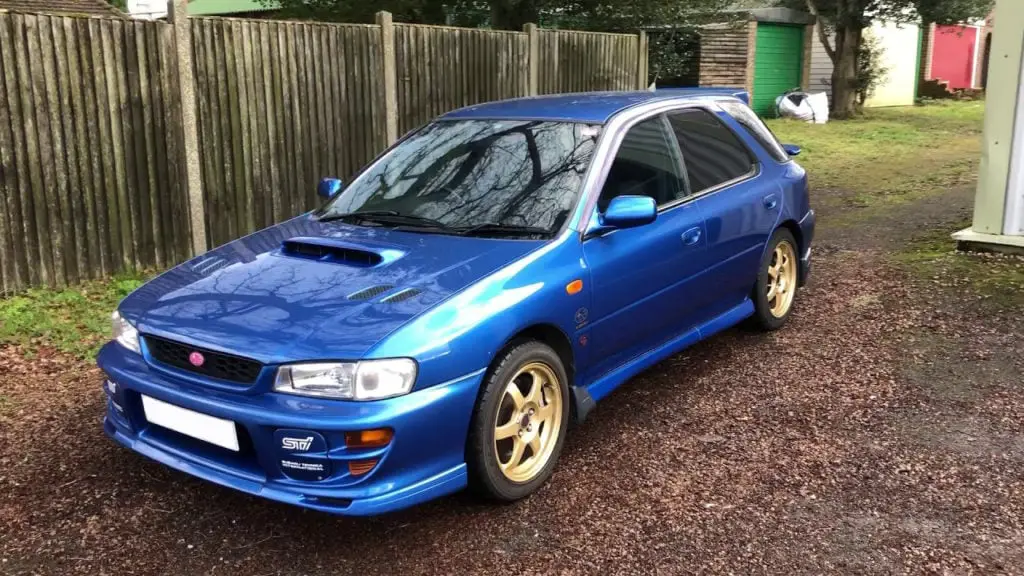
If I’m honest, my first thought was to recommend the Nissan Pulsar GTI-R (or the “baby GT-R” as its known). However, the Pulsar, like the type of star it was named after, was dead on arrival, as it failed to pass the most important test as a hatchback: usability and versatility, due to its strict focus as a homologation rally special. Combined with a lackluster performance as a racing vehicle, and unfortunately, I can’t recommend it. I next went onto the Original Audi Quattro, but, despite the Audi’s shape suggesting it would be a hatchback, it is NOT, and has a traditional trunk instead. And thus, we are back to the baseline, and my recommendation for a classic AWD hatchback: the original Subaru WRX.
While newer models Subarus are the default choice for all-wheel drive sedans, wagons, and hatchbacks, they are plagued with reliability and quality control problems. But why are they the default gold standard. Well, cars like the 1992-2000 Subaru Impreza Wagon, that’s why. While it may be called a wagon, the sizing makes it more hatchback than wagon in practice. Of classic Impreza models, the one to get is the JDM-exclusive 1992-2000 Subaru WRX. Available as a sedan as well, if you want more information on the WRX as a whole, check out my thoughts on the WRX sedan in my previous article here.
Compared to the sedan, the WRX hatchback is 95% the same car, but with some minor differences. The front half of the car is the same, so you still get the high-revving, pre-bro incarnation of the EJ. At the back, there is a bit more weight due to additional sheet metal, but what is gained is additional practicality, as while the older WRX sedans are small everywhere, at least with the hatchback you have a lot of usable space. And due to the 4WD system, the additional weight in the back means overall weight distribution is slightly closer to 50-50. For the rear half of the car, stock spring rates are slightly stiffer to accommodate the extra weight, but, lets be honest, who leaves these stock?
Like with the sedan, these are old, JDM import cars that were commonly thrashed. If you are looking to buy one, its a must to check for questionable repairs of both prior crash damage and rust. Likewise, I would advise you change the cabin air filters and do a thorough cleaning of the interior before any serious driving given Japan’s historically high smoking rate and how uncommon it is to find a smoke free car. And like any older Subaru, due to the possibility of head gasket failure, if you can conduct a compression test on all four cylinders to ensure the health of the motor, do it.
Prices for a JDM-imported WRX hatchback, fortunately, remain quite affordable. $15k USD will get you a car in better than average condition with low miles, and even the best condition cars are $20k-$25K. Naturally, if you can find a top-spec STI model, go for that, though those are much less common. Overall though, if you want a classic hatchback with all-wheel drive, it’s hard to beat a first-gen Subaru WRX, the car that established Subaru as the baseline for affordable AWD performance cars, and, despite its flaws, a superior car to what Subaru sells now in my opinion.
The one to look forward to: Toyota GR Corolla
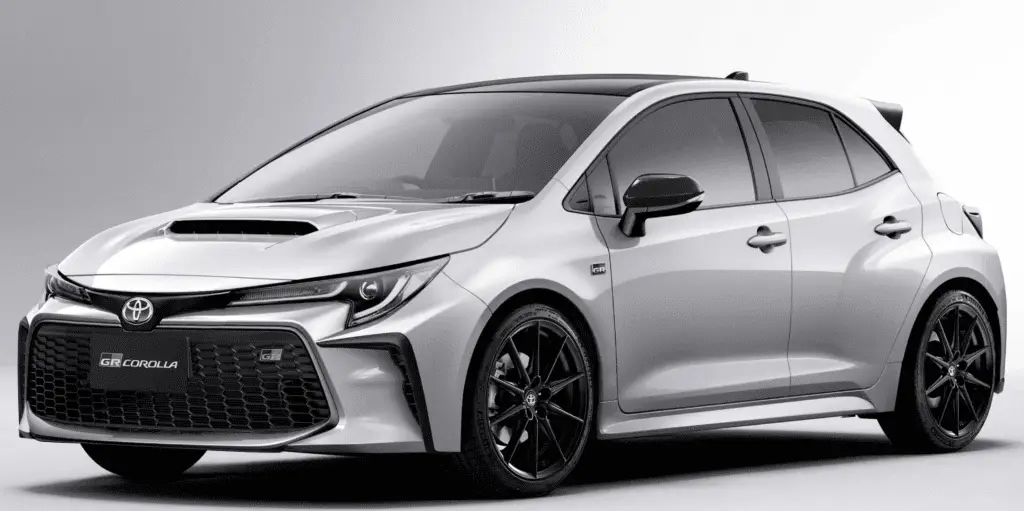
When it was released, the Toyota GR Yaris, a homologation rally special released to the public with a 256 horsepower 3 cylinder turbo motor, all wheel drive, and a 6 speed manual transmission, set the enthusiast community on fire. It got people paying attention even in the U.S, and Toyota said they won’t even sell it in the country! However, they did announce that America would be getting something else with the same powertrain, and that is where the rumor mill for the GR Corolla begins.
Throughout the last few months, Toyota has been teasing the automotive press with subtle hints about a future, performance Corolla in press photos released for other vehicles, most notably in a press photo for the Corolla XSE hatchback, there is a camouflaged Corolla in the background with exterior features only seen previously on the GR Yaris. Combined with a cheeky reference to the GR Yaris engine in the photo, it has been a massive hype machine. And when considering that there was a similar hype for other performance hatchbacks like the Ford Focus RS and Honda Civic Type R over the last few years before their release, and large dealer markups and waiting lists upon initial launch, it is clear that there is a viable market for such a vehicle.
Finding a practical, usable, affordable, and reliable performance car with a manual transmission is difficult in 2021. If priced right ($35k MSRP), and if the rumor mill proves true, the Toyota GR Corolla (or whatever it’s called when it’s launched) has all the makings for a future classic, and, in my opinion, is worth waiting for.
Summary
Which of these all-wheel drive hatchbacks would you buy? What is your favorite hatchback with AWD? Let me know in the comments below.
